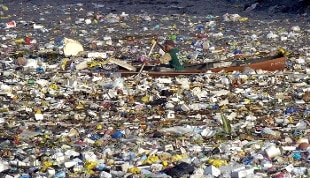- Stop at disposable plastic, all the numbers and what the EU provides
- Cefalù, beached sperm whale. Greenpeace: lots of plastic in the stomach
- Sochi, a soccer field built with recycled plastic cups
- Pollution, banning of disposable plastic in the European Union starting from 2021
- Canada prohibits disposable plastic
Share
09 October 2019The fight against waste has assumed catastrophic connotations: more than 70% of marine litter is deposited in the Italian seabed and 77% is constituted in plastic. The Higher Institute for Environmental Protection and Research (Ispra) and the Environmental Protection System (Snpa) raise a serious alarm based on the results of monitoring the quality of our seas. The sea of Sicily, with 786 objects found and a total weight of more than 670 kg, is among the largest submarine landfills in the country, followed by Sardinia with 403 objects in the totality of the 99 coves and a total weight of 86.55kg.Beyond the emergency
The situation - explained by ISPRA - appears to be very serious "and varies from area to area and according to the monitored areas. These results can be considered" the first reference knowledge base on the quantity of marine waste in the various sectors (sea beds, water column and beaches ". In fact" in the rocky bottoms, from 20 to 500 meters deep, the highest concentrations of waste on the bottom are found in the Ligurian Sea (1500 objects per hectare), in the Gulf of Naples (1200 objects per hectare) and along the Sicilian coasts (900 objects per hectare) ".
The seabed is landfill
"The situation of the Italian seabed is alarming - observes Ispra - in the Adriatic-Ionian region the average waste found exceeds 300 waste per square kilometer, of which 86% is plastic, in particular disposable (77%). Industrial and food packaging, shoppers' bags and plastic bottles, including reticules for mussel farming, are the most common waste: the coastal area south of the Po delta (983 waste per km2), the northern area (910 waste per km2) ) and southern (829 waste per square kilometer), Corfu and the waters in front of Dubrovnik (559 waste per square kilometer) are the "places of this area" with the highest density of waste at the bottom of the sea ".
Omnipresent plastic
Altogether each year about 8 million tons of plastic end up in the sea, of which 7% in the Mediterranean. The results that emerged from ISPRA monitoring, as part of the European Medsealitter project in 2017 and 2018, show the trend in the density of floating macro-offenders on the high seas, near the coastal strip, and near the mouth of the rivers. The data tell us that "the mouth of the rivers has the largest amount of floating waste (more than 1000 objects per sq. Km) and near the coast between 10 and 600 objects per sq. Km. The further away you are in the open sea and the more the number of objects drops from 1 to 10 per sq. km.
The role of fishermen
More nets than fish are found in the fishermen's nets. 194 tons of waste were collected in the Adriatic in 6 years. Ispra says this based on the results of marine garbage monitoring. On the subject the Ddl Salvamare is being discussed in the Chamber which essentially allows the fishermen to carry off the waste thrown up during their normal work activities. "It was fundamental the collaboration of the fishermen in the monitoring of the seabed conducted in the Adriatic from 2013 to 2019 - is explained by ISPRA -. They were found in the networks of 224 fishing vessels involved in two European research projects, Defishgear and Mlrepair, 194 tons of waste stuck ". And Ispra warns: "The situation does not improve as it rises to the surface. The quantities of macroplastics found reach an average density ranging between 2 and 5 floating objects per square kilometer, while the average density of microplastics, ie the smallest particles, it is between 93 thousand and 204 thousand microparticles per sq. km ". It does not go better along national beaches and coasts that host from 500 to 1000 rubbish every 100 meters of beach.

